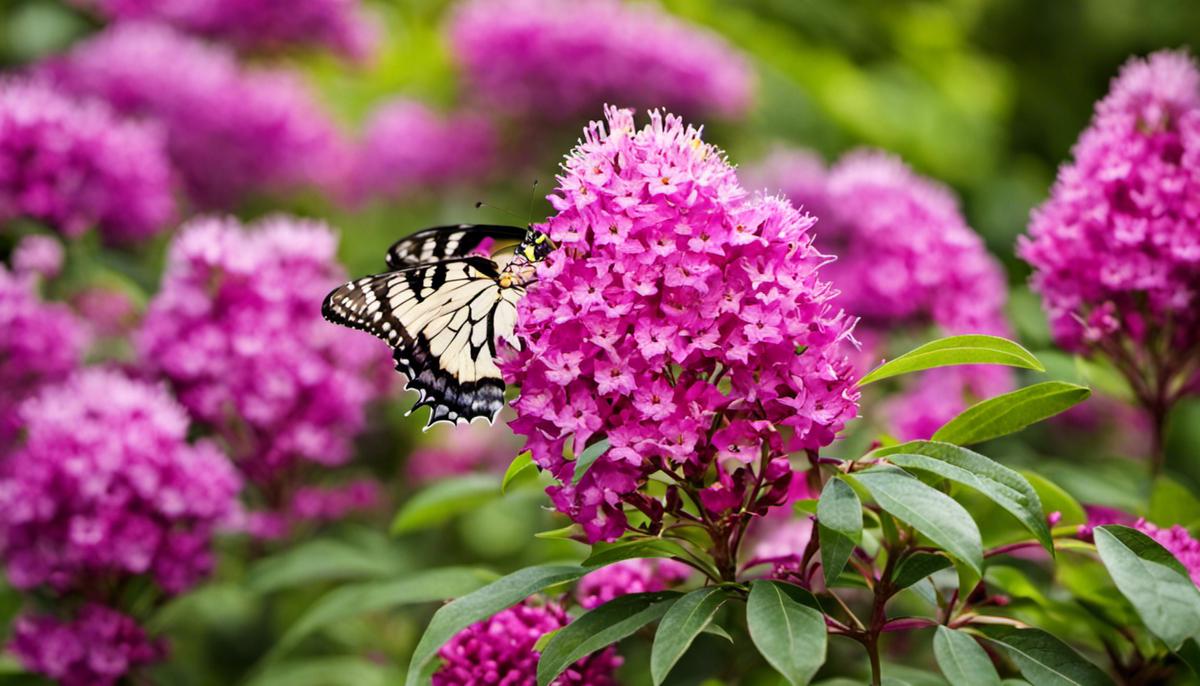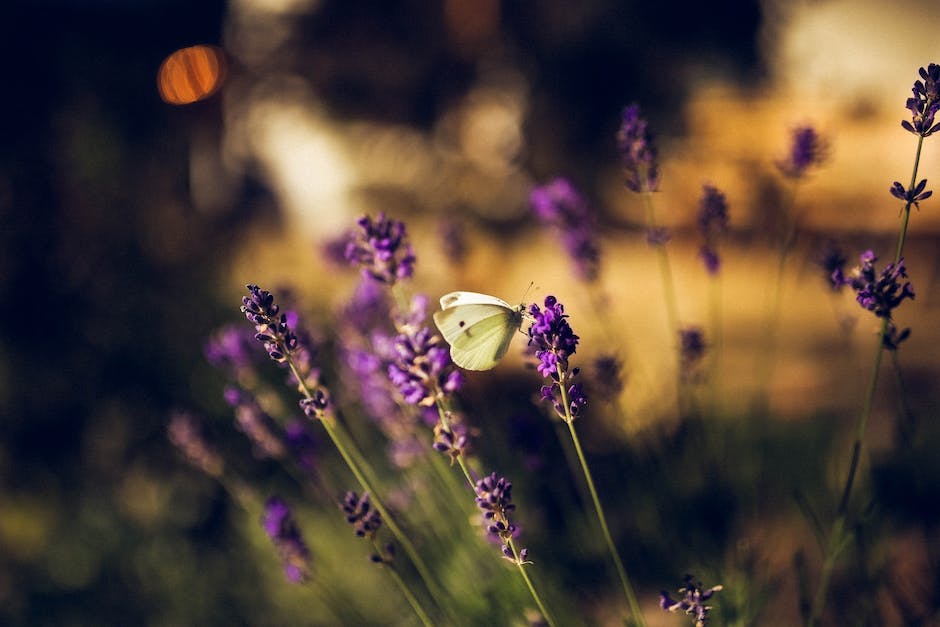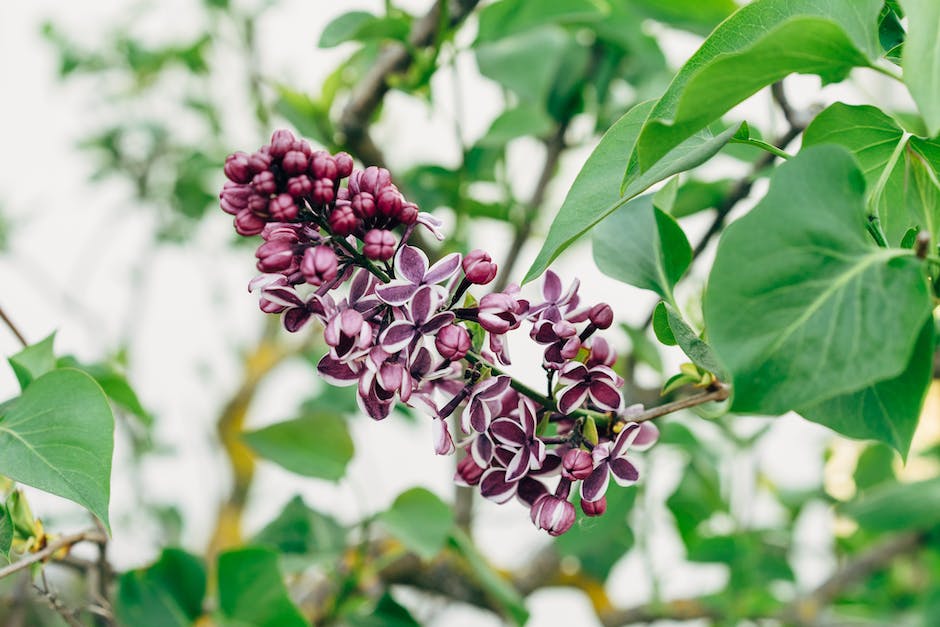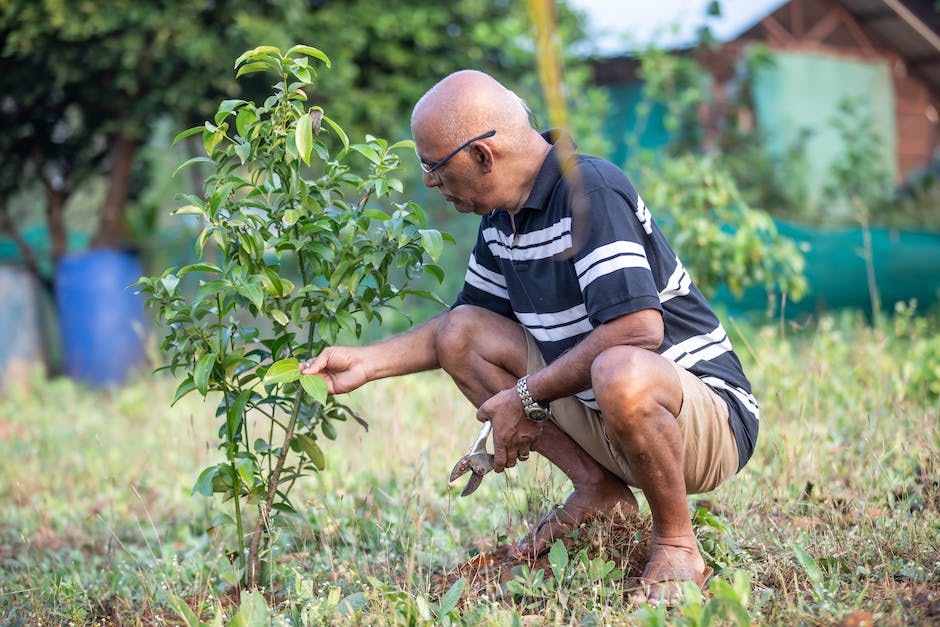Mastering the Pruning of Butterfly Bushes

The Butterfly Bush, scientifically known as ‘Buddleia’, has become a popular favorite among gardening enthusiasts due to its vibrant flowers and its ability to draw a host of butterflies. This bush, also known as summer lilac, charms not only with its rich color but also with its maintenance simplicity. However, even the hardiest plants require some tending to stay healthy and to maximize their blooming potential. In this deep dive, we will focus on understanding the butterfly bush, identifying the ideal times to prune, and highlighting the best techniques for this crucial task.
Understanding Butterfly Bushes
Chasing the Winging Wonders: The Joy of Cultivating a Butterfly Bush
Famed for their remarkable, nectar-rich blooms and irresistible magnetism to colorful-winged marvels, Butterfly Bushes – fondly known as Buddleia – add an element of delight, wonder, and liveliness to any garden. They are the unsung heroes of the flora world, simultaneously serving aesthetic purposes and acting as a banquet for our fluttering friends. Unveiling the enchanting world of Butterfly Bushes involves understanding their key features and the perfect environment for flourishing.
The Butterfly Bush is a hardy, fast-growing, and dynamic shrub from the Scrophulariaceae family that is entirely capable of withstanding various climate conditions, from hardiness zones 5 through 9. Recognized by botanists as Buddleia davidii, this plant can skyrocket to a staggering 5 to 10 feet in one growing season. A typical butterfly bush embellishes its branches with dense clusters of tubular flowers; their vibrant hues range from magenta-pink, to lavender, to the rare honeyed-orange, or even the deepest velvety blue. The signature panicle shape often stretches to about 4 to 10 inches, endowing the plant with a majestic, fountain-like appearance.
Possessing an extraordinary allure, Butterfly Bushes can enchant any space. However, their charm requires adherence to certain growing conditions to proliferate efficiently. Although adaptable, there are guidelines to maximize the Butterfly Bush’s growth and impact.
Sunlight is an undebatable necessity. These plants are lovers of light, thriving best in full sun. A minimum of 6 hours of direct sunlight daily ensures the healthy growth and profuse flowering that Butterfly Bushes are known for.
When it comes to soil, Butterfly Bushes are not too picky but do lean towards preference. A loamy or sandy type of soil can enhance your plant’s performance, but the key is to ensure excellent drainage. Waterlogged roots can be catastrophic, leading to root rot or wilting. Regular monitoring of soil moisture levels is imperative.
The pH of the soil is also essential for a healthy Buddleia. They prefer neutral to slightly acidic soil, with a pH range of 6.0 to 7.0. Regular testing and adjustments can help to maintain the optimal balance.
Feeding a Butterfly Bush starts with a light application of a balanced, slow-release fertilizer at the beginning of spring. Avoid over-fertilization as it might result in fewer flowers and a weakened plant.
The maintenance of a Butterfly Bush involves annual pruning. Trimming to 1 to 2 feet from the ground in early spring encourages new growth and abundant flowering.
In terms of diseases, Butterfly Bushes are generally resistant. However, paying attention to sudden changes in leaf color or reduced vigor can help catch an issue early.
Melding nature’s charm with an engaging hobby, cultivating a Butterfly Bush is a rewarding endeavor. With capable hands and the right care, these bushes become feasts for the eyes and banquets for winged enchanters, bringing joy to their cultivators and visitors alike. May these insights bring thriving Butterfly Bushes to all hobbyist gardens!

Best Time to Prune Butterfly Bushes
Editor’s note: This guide assumes that readers are familiar with basic butterfly bush care and focuses solely on the specifics of pruning, which is an essential part of butterfly bush maintenance that contributes significantly to their health and vitality.
Let’s delve into the nitty-gritty of the best time to prune butterfly bushes and the rationale behind it!
Butterfly bushes, commonly referred to as Buddleia, are famous for their ability to attract a myriad of pollinators with their pendulous and vibrant blooms. Critical to enjoying the aesthetic and functional benefits of these shrubs is understanding the timing of their pruning regimen.
So, when is the absolute best time to prune butterfly bushes? The answer is during late winter or early spring, specifically around the last frost in your area. It might sound counterintuitive, but this timing is pivotal for effective pruning and to promote optimal bush re-blooming.
Pruning butterfly bushes during late winter or early spring allows the bush exposure to the bare minimum of freezing temperatures, thus reducing the risk of frost damage to new shoots. Such damage can significantly affect the overall growth and vitality of the plant.
Additionally, this is the period of the year when butterfly bushes are entering their dormant phase. As deciduous plants, butterfly bushes appear rather bleak and lifeless during winter, but not to worry – this is typical! So, if you prune during this period, you’re not interfering with active growth or flower production.
An advantage of pruning when the plants are dormant is you have a clear idea of the wood that’s old and the wood that has died over winter. A good rule of thumb is to prune the bush down to 12 to 24 inches from the ground, ensuring that you are taking off most of the previous year’s growth. This helps to rid the plant of potential disease reservoirs and encourages the growth of vigorous new shoots in the spring.
The manner in which you prune also matters. It should include cutting back older branches heavily while leaving newer ones mildly trimmed. This method balances the bush, maintaining its vitality, and stimulate abundant flower production that butterfly bushes are famous for.
Late winter or early spring pruning caters to the Buddleia‘s unique growth habit: They bloom on new wood, meaning the current year’s growth. When you prune them just as spring is warming, you’re giving your butterfly bushes a clean slate for fresh, flourishing growth that results in summer blooms to be the star attraction for butterflies and other pollinators.
In conclusion, successful butterfly bush care isn’t just about knowing what to do – it’s about when to do it. Timing plays a crucial role, especially in pruning, and can be the decisive factor between a vibrant, thriving butterfly bush, or a struggling one. Don’t forget to keep your pruning shears sharp and clean between each cut—your butterfly bushes will thank you by offering you a summer full of beautiful, butterfly-filled blooms!

Pruning Techniques for Butterfly Bushes
Diving into the nuanced artistry of butterfly bush pruning, one can truly appreciate a careful balance between growth and control, fostering an enchanting display that truly stands out in any gardener’s proud collection. Remember, we’ve just touched upon the basics so far. Now, let’s embark on a deeper understanding of the correct pruning techniques, so your plentiful butterfly bush can thrive season after season.
Any passionate enthusiast will affirm the significance of the ‘when.’ Proper timing is critical to execute effective pruning. Late winter or early spring, when the shrub is still dormant, has proven to be the optimum period. This timing aligns seamlessly with the bush’s natural cycle, offering the strength and nourishment needed to regrow with absolute vitality once the warmer months arrive.
So, why is pruning during the dormant phase so essential? The answer lies in helping the plant conserve its energy for robust new growth when the weather warms up. Ensuring you prune at the end of a cold spell but before the first buds of spring starts to appear allows the freshly pruned stems to tap into that conserved energy, encouraging a vibrant bloom in the warmer months.
The method of pruning adopted can also be a significant determinant of your butterfly bush’s overall health and appearance. Butterfly bushes possess a unique growth habit. Their older branches tend to get woody and unproductive with age. Therefore, it’s advisable to cut them back significantly, all the while keeping the younger, more energetic branches mildly trimmed. This strategic approach stimulates the butterfly bush to sprout new growth, which will result in abundant flower production.
The tools you employ play an equally vital role in ensuring the success of your pruning efforts. Maintaining a sharp and clean pair of pruning shears isn’t just about efficiency. Sharp shears make clean, precise cuts that heal quickly, with less chance of harboring disease and pests. Conversely, a dull cutter may create a coarse cut, potentially causing stress to your beloved butterfly bush. Cleaning your shears regularly, especially between different prunings, prevents any potential spread of diseases from one plant to another.
No matter the size of your butterfly bush, these pruning techniques suit every specimen, from the petite ‘Blue Chip’ to the towering ‘Pink Delight.’ The process might sound daunting, but once mastered, will surely become as instinctive as breathing – an essential part of your nurturing regimen that will reward you with a spectacular floral show. A well-pruned butterfly bush is a living testament to your gardening prowess. When the summer sun lights up those brilliantly hued clusters, and butterflies flutter delicately around them, you’ll know: this is the art of gardening brought to life.

Maintaining a lush and vibrant butterfly bush is achievable with the right knowledge and care regimen. Ensure an abundant bloom and great health of your bush by adhering to the seasonal considerations in pruning, especially the importance of late winter and early spring pruning. Remember, a well-pruned bush encourages new growth and better flowers. Moreover, proper pruning techniques combined with suitable tools will help you avoid causing harm to the plant. Armed with these gardening insights, you’re one step closer to creating a spectacular garden display that will be the envy of the neighborhood and a haven for butterflies.



